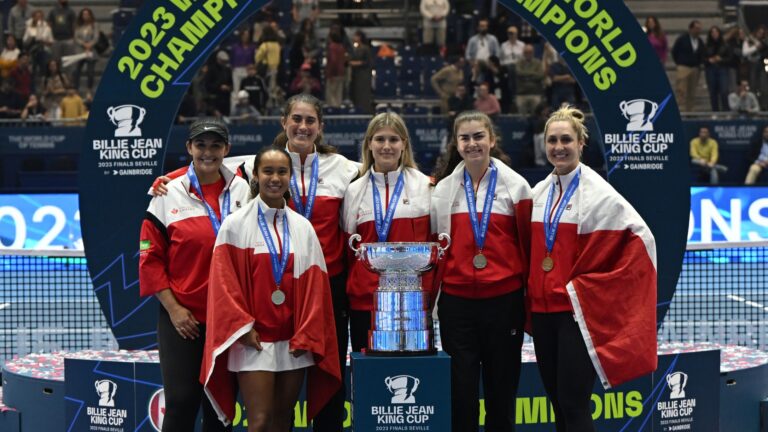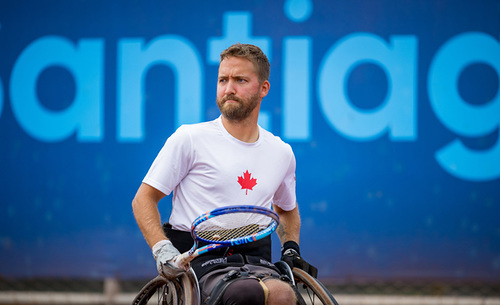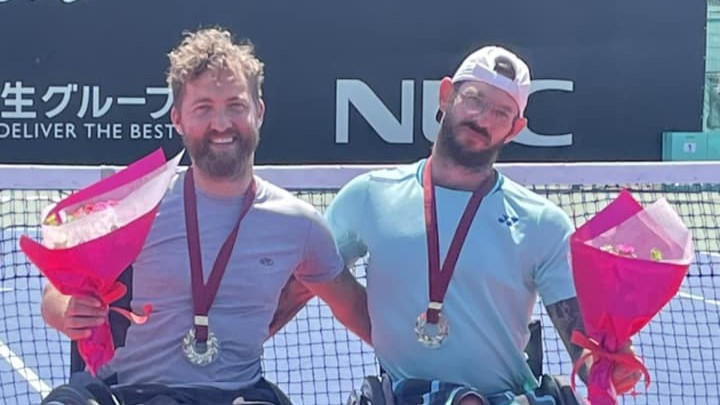
Rafael Nadal was playing the 13th Australian Open of his career and it has now sadly been added to the list of his misfortune Down Under.
He lost to Marin Cilic on Tuesday night in Melbourne after experiencing discomfort in his upper right leg in the third set, which worsened in the fourth and forced his retirement early in the fifth set. The final score read 3-6, 6-3, 6-7(5), 6-2, 2-0 ret. for the sixth-seeded Croat.
Nadal had been in impressive form in reaching the quarter-finals, losing just one set – to Diego Schwartzman in the round-of-16.
There will of course be speculation about his preparation after patellar tendinitis shortened his off season and prevented him from playing any tour event or exhibition before the 2018 Australian Open.
He has retired nine times during his career, with his only other Grand Slam event retirement also being in Australia – in the 2010 quarter-finals with a knee injury against Andy Murray.
Here’s the tale of Rafa’s woes at the Australian Open through the years:
Retirements (2): 2010 v Murray (knee) in quarter-finals
2018 v Cilic (upper right leg) in quarter-finals
Finished injured (3): 2007 quarter-finals loss v Fernando Gonzalez (leg)
2011 quarter-finals loss v David Ferrer (left thigh)
2014 final loss v Stan Wawrinka (back)
Did Not Play (2): 2006 and 2013
Over his 13 years at Melbourne Park, Nadal has played three of the most unforgettable matches of the 21st century.
His best memories come from 2009 when he won the title defeating Roger Federer in a dramatic five-setter 7-5, 3-6, 7-6(3), 3-6, 6-2. That followed an epic five-set, semifinal victory over Fernando Verdasco – 6-7(4), 6-4, 7-6(2), 6-7(1), 6-4 in five hours and 14 minutes.
That time on court was bettered in 2012 in his final with Novak Djokovic – five hours and 53 minutes in a timeless classic but a 5-7, 6-4, 6-2, 6-7(5), 7-5 loss for the Spaniard.
Nadal may not have quite the following of Federer in Australia, but he’s much beloved Down Under as can be seen by the crowd above packed in around practice Court 16 to watch him last week.
Nadal was hobbling badly at his post-match press conference Tuesday night and spoke about the wear and tear of hard courts on the bodies of tennis players – also mentioning possible long-term effects.
The 31-year-old Spaniard has won 10 French Opens, three US Opens, two Wimbledons but just one Australian Open. There is strong motivation for him to try to win each Grand Slam at least twice – something that now has to be in doubt, especially given his ill-fated history in Melbourne.
The strong favourite of all the remaining players is Roger Federer after his victory a year ago at Melbourne Park, his overall strong 2017 and an impressive 4-0 start to 2018 at the Hopman Cup. Add four wins so far at the Australian Open and it’s difficult to make a compelling case for anyone else, especially now with Nadal out.
It all lines up well for Federer – but maybe just a little too well. Facing Tomas Berdych in Wednesday’s quarter-finals, he is 19-6 against the 6-foot-5 Czech and has won the previous seven times they have played dating back to 2014. But the last three matches were 6-2, 6-4, 6-4 in the Aussie Open quarters a year ago, 6-2, 3-6, 7-6(6) (two match points saved) in the quarters of the Miami Open last March and 7-6(4), 7-6(4), 6-4 in the 2017 Wimbledon semi-finals.
The 32-year-old Berdych, who suffered with a back injury last fall, seems to be back in good form and, though ranked no. 20, may be even more dangerous now when not much is expected of him. His 6-3, 6-3, 6-2 win over Juan Martin del Potro in the third round was impressive and he still probably has inflicted the most traumatic loss of Federer’s career on the great Swiss. In 2004, as a virtually unknown 18-year-old, he upset the then high-flying World No. 1 4-6, 7-5, 7-5 in the second round of the 2004 Olympics in Athens. In hindsight that was Federer’s best chance at singles gold.
If Federer can get past Berdych, and he’s always wary of playing the powerful Czech, and then either Hyeon Chung or Tennys Sandgren in the semifinals, it will be either Cilic or Kyle Edmund in the final.
It’s easy to forget that at the last Grand Slam, Federer lost to del Potro in the US Open quarter-finals when still not at his best as he tried to regain form after injuring his back in the final of the Rogers Cup in Montreal three weeks earlier.
Can he remain healthy and on top of his game for three more matches? If he can his reward would be a nice round number – a remarkable, record-increasing 20 career Grand Slam singles titles.
The women’s draw became further unbalanced on Tuesday with Belgian Elise Mertens’ 6-4, 6-0 dusting of no. 4 seed Elina Svitolina. The only seeded player remaining in the bottom half is No. 2 Caroline Woznaicki, who beat Carla Suarez Navarro 6-0, 6-7(3), 6-2. Wozniacki takes on the surprising, and dangerous, no. 37-ranked Mertens, 22, in Thursday’s semifinals.
By contrast, the top half of the draw has a dynamite collection of players – all seeds – as no. 1 Simona Halep meets no. 6 Karolina Pliskova in one quarter-final on Wednesday after the renascent Angelique Kerber, no. 21, plays the explosive no. 17 Madison Keys, a player who was arguably just a right thigh strain injury away from winning the 2017 US Open final against Sloane Stephens.
Despite the absences of Serena Williams, Victoria Azarenka and the eliminations of Garbine Muguruza and Maria Sharapova, it’s hard to imagine more appetizing quarter-final line-up than Halep – Pliskova and Kerber – Keys.
CANADIANS GOING FORWARD
MILOS RAONIC: Projected to be ranked no. 29 at the end of the Australian Open where he lost in the first round (Lukas Lacko), failing to defend 360 quarter-finalist points from 2017, Raonic is entered in the ATP 250 in Delray Beach, Florida (Feb. 19), an event where he’s defending 150 runner-up points after pulling out of last year’s final against Jack Sock with a right hamstring issue. He could play other tournaments before the BNP Paribas Open in Indian Wells the week of March 5th.
Between Delray Beach and the month of May, he’s only defending 45 points from a second round finish at last year’s Miami Open where he withdrew with the hamstring problem before his third round match with Jared Donaldson.
DENIS SHAPOVALOV: The 18-year-old deserved better during his January swing in Australia – losing a close match to an in-form Kyle Edmund in Brisbane, going out to a blazing Juan Martin del Potro in Auckland and then failing to put away Jo-Wilfried Tsonga after leading 5-2 in the fifth set of their second round match at the Australian Open – and not to overlook emphatic wins over Rogerio Dutra Silva in Auckland and Stefanos Tsitsipas at the Aussie Open.
Shapovalov should have his highest ranking yet – no. 48 – after the Australian Open.
At the end of February he will begin having to defend some points from 2017 – 27 for winning the Gatineau (QC) Futures, eight for the semifinals of the Sherbrooke (QC) Futures, 80 for winning the Drummondville (QC) Challenger and 48 for the semifinals at the Guadalajara (Mexico) Challenger. That’s a chunk of points but from the end of March until June he has zero points to defend and could really do some damage during the clay-court season.
VASEK POSPISIL: Back in the Top 100 with a projected ranking of no. 94 at the end of the Australian Open, Pospisil is playing in the 64,000 euro Challenger event in Rennes, France, this week and, as no. 2 seed, faces Yasutaka Uchiyama of Japan in the first round. Top seed is no. 90 Mikhail Youzhny. (Ernests Gulbis, 29 and ranked No. 204, has a wild card into the event.)
Pospisil may play other events, but he is on the lists to play qualifying for the ATP 500 in Dubai or possibly the ATP 250 in Acapulco the week of Feb. 26.
Between now and April, he will be defending 55 runner-up points from the San Francisco Challenger, six for second round of Delray Beach qualifying, 61 for qualifying and reaching the third round (beating World No. 1 Andy Murray in the second round) at Indian Wells, six for the second round of the Guadalajara (Mexico) Challenger and 17 for reaching the second round of the Leon (Mexico) Challenger.
GENIE BOUCHARD: Bouchard, who turns 24 next month, is expected to drop from No. 112 to No. 119 after the Australian Open. She’s entered in the $140,000 WTA Taiwan Open starting next Monday.
Her events after that are uncertain but she did talk about playing the Challenger event in Indian Wells the week before the actual main BNP Paribas Open in Indian Wells begins on March 5th.
Bouchard has minimal points to defend – one Acapulco, 10 Indian Wells, 10 Miami, one Monterrey and 21 from the Indian Harbour (Florida) $80,000 ITF tournament and one from Istanbul – before the month of May. But in the early part of May she defends 215 points from Madrid a year ago where she defeated Alizé Cornet, Maria Sharapova and Angelique Kerber before losing to Svetlana Kuznetsova in the quarter-finals.
DABROWSKI DOWN UNDER DOUBLES
In women’s doubles at the Australian Open on Tuesday, the sixth-seeded team of Gabriela Dabrowski and Xu Yifan of China were beaten 0-6, 6-1, 7-6(2) by second-seeded Russians Ekaterina Makarova and Elina Vesnina 0-6, 6-1, 7-6(2) in the quarter-finals.
But Dabrowski was successful in mixed doubles, advancing to the third round with partner Mate Pavic of Croatia. Seeded no. 8, they defeated the Dutch pairing of Demi Schuurs and Jean-Julien Roger 6-1, 6-3. In the quarter-finals they take on Johanna Larsson of Sweden and Matwe Middelkoop of the Netherlands.
DAVIS CUP VS. CROATIA
Denis Shapovalov will lead the Canadian team against Croatia in the 2018 Davis Cup World Group first round from Feb. 2-4. New Canadian captain Frank Dancevic announced his squad on Tuesday and it will be the no. 50 Shapovalov, no. 105 Vasek Pospisil, no. 139 Peter Polansky (above) and Daniel Nestor, who ranks no. 55 in doubles.
Croat captain Zeljko Krajan will pick four players from among no. 6 Marin Cilic, no. 46 Borna Coric, no. 179 Viktor Galovic, bo. 41 Franko Skugar and Ivan Dodig, ranked no. 5 in doubles.
The tie will be held in Osijek, Croatia, near the Hungarian border on an indoor red-clay court. We will have blogs direct from Croatia beginning Monday January 29th.
AUSTRALIAN POST CARD
There’s an Australian jokester who wanted to scare some friends from England who were traveling to Australia. They had heard about the insects, snakes, spiders etc. that can be found in the antipodes. So this guy had a little fun – buying these oversized plastic insects and sticking them on a tree and sending a picture of them to his friends suggesting they would encounter creatures like these once they got to Australia.













